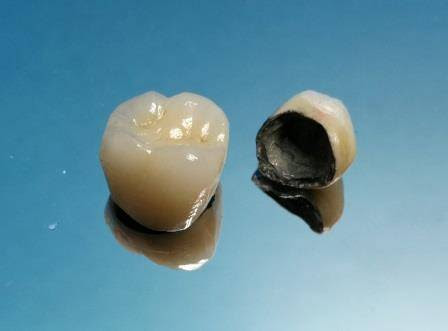The dental crown is a fixed prosthesis used in dentistry for its aesthetic and functional benefits. It completely covers the visible part of the tooth to restore its shape, size, and function. Why consider getting a dental crown? And what are the different types of crowns?
Also Read:
Table of Contents
- Introduction
- Why Get a Dental Crown?
- The Different Types of Dental Crowns
- How to Choose the Right Crown?
- Conclusion and Appointment Scheduling
Why Consider Getting a Dental Crown?
1. Restoring Function
Getting a dental crown is considered for various reasons. It helps to reinforce a weakened tooth—especially after a root canal treatment or a traumatic fracture—by completely encasing it to prevent further damage. It is also recommended to cover a severely decayed tooth when a filling alone does not ensure long-term durability and carries a high risk of recurrence.
2. Restoring Aesthetics
Aesthetically, a crown can mask a filling, visible enamel stains, or an unsuitable shade. It is also used to modify the shape of a tooth or to harmonize an entire smile by selecting the most complementary color and form. Since a brilliant smile plays a crucial role in social interactions, a radiant smile helps boost self-confidence. In addition, a crown can be used to align a tooth within the smile line or to cover an implant.
The Different Types of Dental Crowns
The materials commonly used to manufacture dental crowns are:
- Ceramic or Porcelain
- Resin
- Metal
- Ceramic-Metal
1. Ceramic-Metal Crown
- Strength: Very durable, it withstands chewing forces effectively, making it an excellent choice for molars and premolars.
- Aesthetics: With its ceramic component and a wide range of shades, it provides a more natural appearance than an all-metal crown.
- Precision: Advanced technologies used in our partner clinics ensure a custom fit with high precision.
- Durability: Its average lifespan is around 15 years, but it can last over 30 years.
- Cost: More affordable than a zirconia or all-ceramic crown.
2. Ceramic Crown (Emax or Zirconia)
We often recommend ceramic crowns such as zirconia or lithium disilicate to avoid certain drawbacks associated with metal:
- Gray Line: Over time, wear on the tooth and gum can expose the metal edge of the crown, creating a thin gray line between the tooth and the gum.
- Shadow Effect: Under certain lighting conditions, the metal beneath the ceramic may cast a shadow, making porcelain-fused-to-metal crowns less ideal for front teeth compared to zirconia.
- Allergic Risk: Although rare, an allergic reaction to metal is possible, particularly with chrome-nickel alloys (which are not used at our dental office).
3. Metal Crown
Made from metals such as nickel, chrome, titanium, or gold, this crown is very robust and often more affordable. However, its metallic appearance makes it less aesthetic, rendering it more suitable for back teeth.
4. Temporary Resin Crown
Primarily used on a temporary basis, the resin crown protects the tooth while waiting for the placement of a permanent crown. However, its fragility makes it unsuitable for long-term use.
How to Choose the Right Crown?
The choice of crown type depends on several factors, including:
- The location of the affected tooth
- The patient’s aesthetic preferences
- The available budget
Schedule an Appointment Today
It is essential to consult a dentist to determine the best solution for your situation.
Contact us via WhatsApp for more information:
Before you Go!
Thank you for reading.
Remember, if you know someone who might like this blog, sharing is caring.










0 Comments